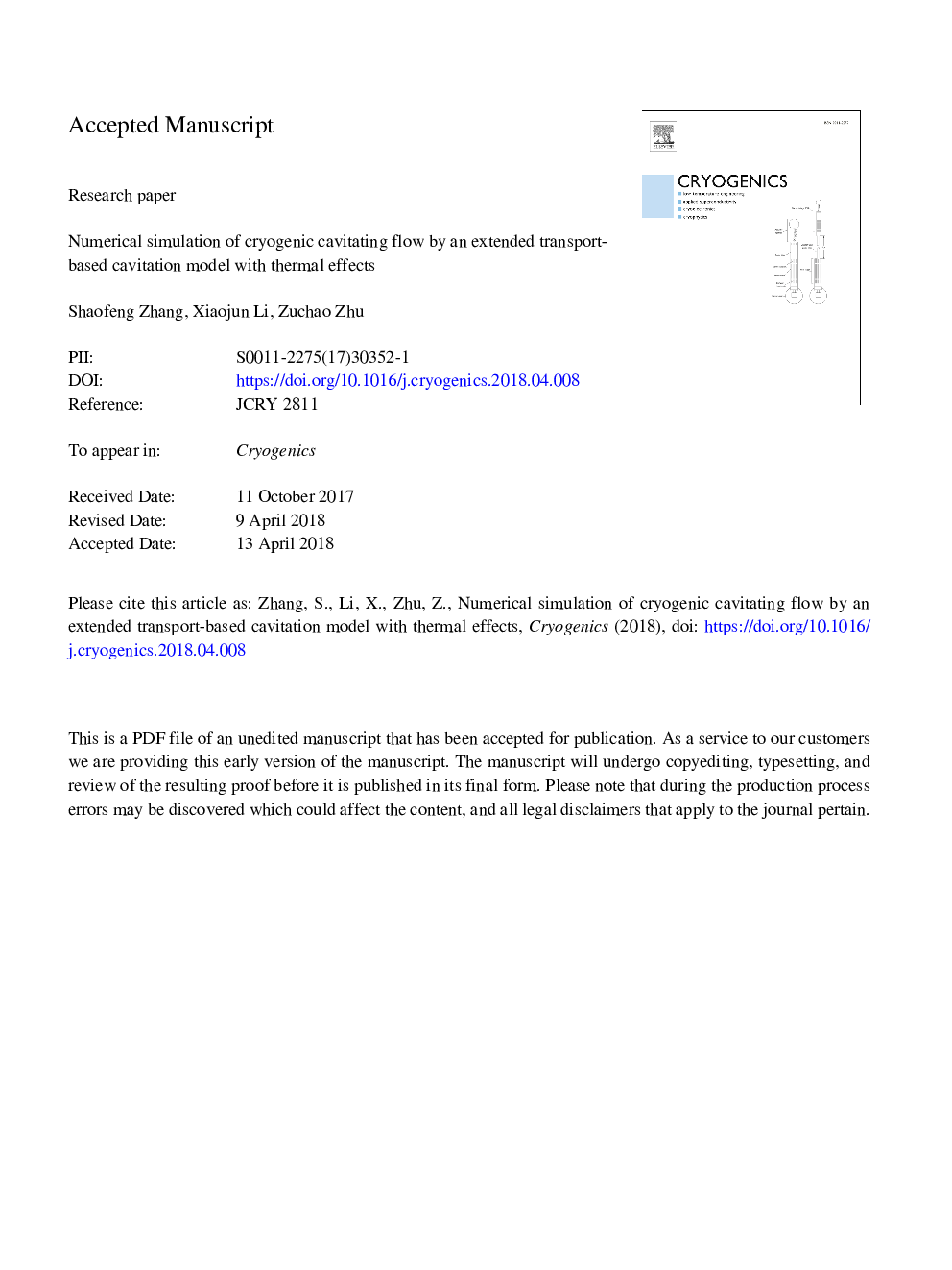| Article ID | Journal | Published Year | Pages | File Type |
|---|---|---|---|---|
| 7915618 | Cryogenics | 2018 | 12 Pages |
Abstract
Thermodynamic effects on cryogenic cavitating flow is important to the accuracy of numerical simulations mainly because cryogenic fluids are thermo-sensitive, and the vapour saturation pressure is strongly dependent on the local temperature. The present study analyses the thermal cavitating flows in liquid nitrogen around a 2D hydrofoil. Thermal effects were considered using the RNG k-ε turbulence model with a modified turbulent eddy viscosity and the mass transfer homogenous cavitation model coupled with energy equation. In the cavitation model process, the saturated vapour pressure is modified based on the Clausius-Clapron equation. The convection heat transfer approach is also considered to extend the Zwart-Gerber-Belamri model. The predicted pressure and temperature inside the cavity under cryogenic conditions show that the modified Zwart-Gerber-Belamri model is in agreement with the experimental data of Hord et al. in NASA, especially in the thermal field. The thermal effect significantly affects the cavitation dynamics during phase-change process, which could delay or suppress the occurrence and development of cavitation behaviour. Based on the modified Zwart-Gerber-Belamri model proposed in this paper, better prediction of the cryogenic cavitation is attainable.
Related Topics
Physical Sciences and Engineering
Materials Science
Electronic, Optical and Magnetic Materials
Authors
Shaofeng Zhang, Xiaojun Li, Zuchao Zhu,
